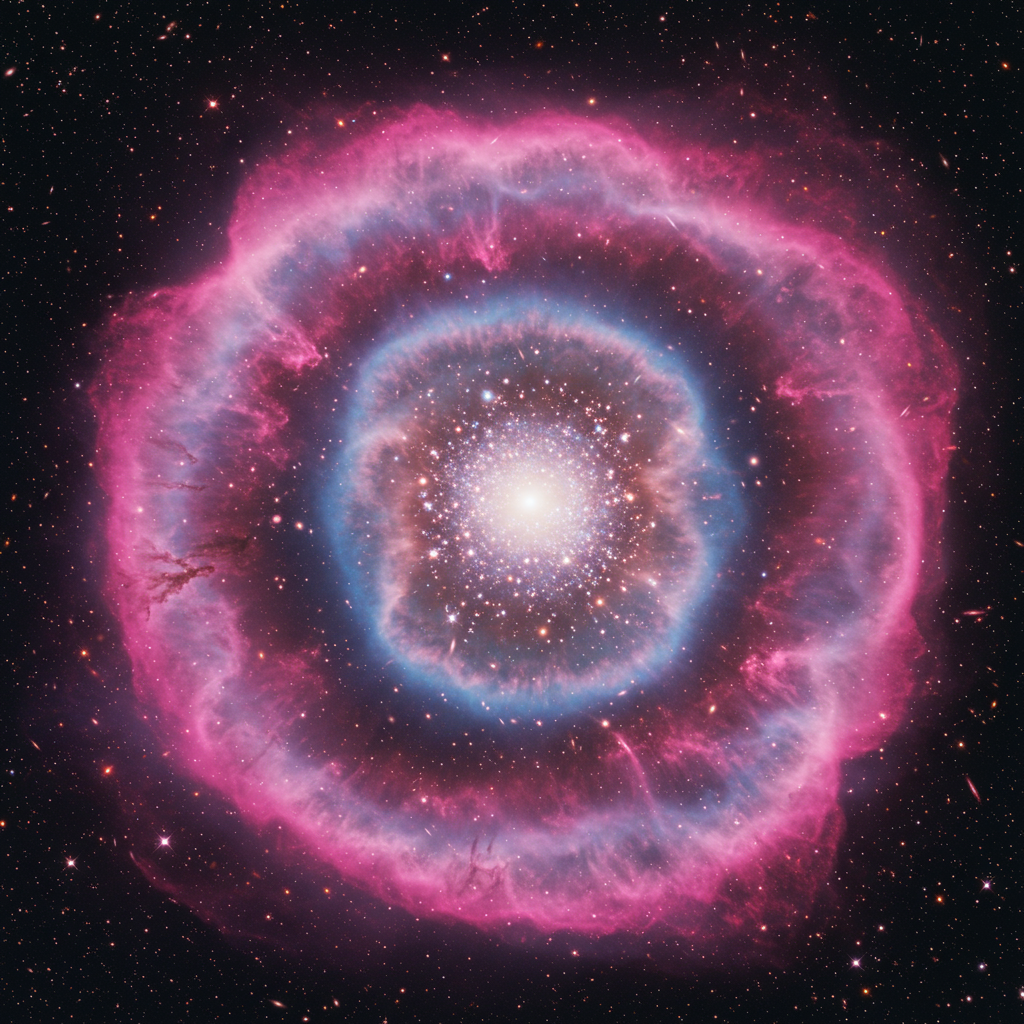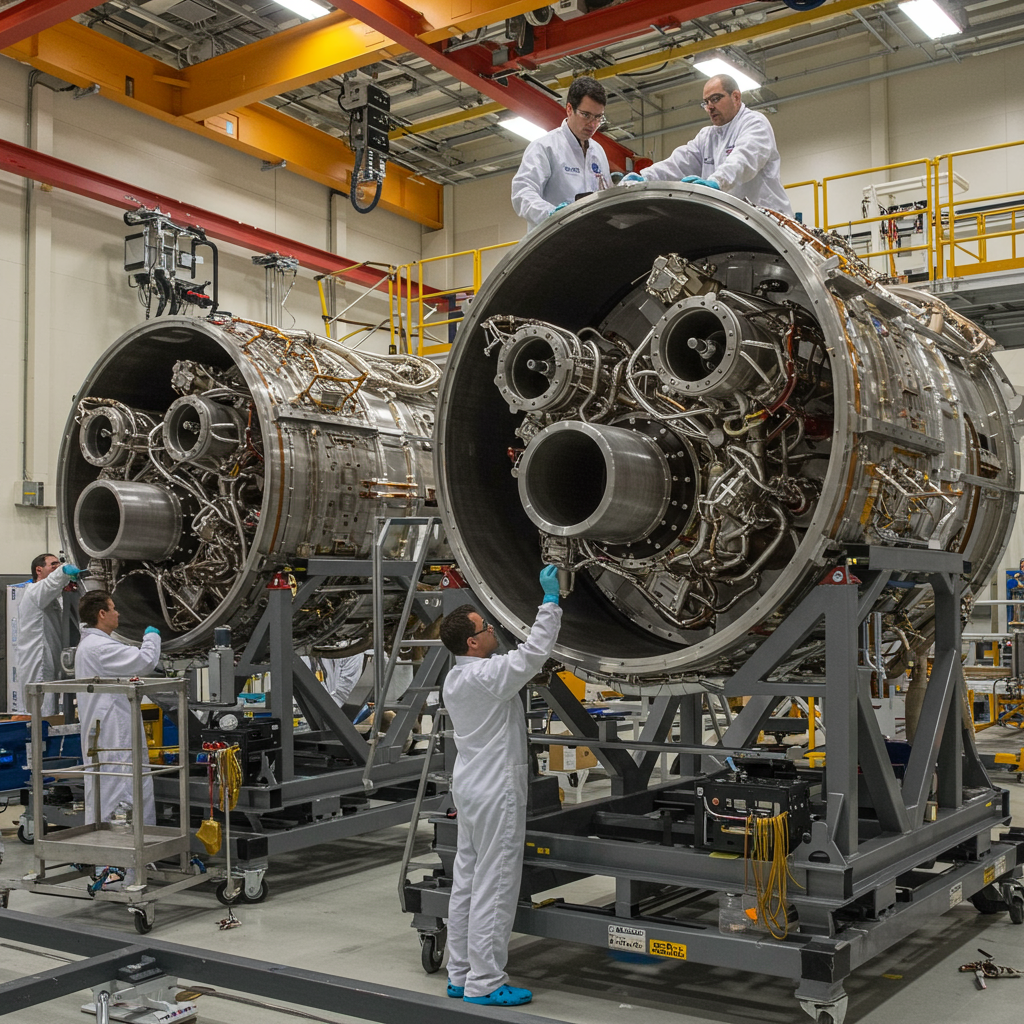Astronomers peering 10 billion light-years into the cosmos have made a remarkable discovery: a vast, energetic cloud of particles enveloping a distant galaxy cluster. Dubbed a “cosmic mini-halo,” this structure is the most remote of its kind ever detected, offering an unprecedented window into the universe’s turbulent infancy.
The find dramatically shifts our understanding of the early universe, suggesting that these massive cosmic neighborhoods – among the largest structures known – were bombarded by high-energy particles for billions of years longer than previously believed.
“It’s like finding a vast cosmic ocean,” explained Julie Hlavacek-Larrondo of Université de Montréal, co-leader of the research team, “where entire galaxy clusters are constantly immersed in high-energy particles.”
Published in The Astrophysical Journal Letters, the discovery paints a picture of the universe when it was just a quarter of its current age. Back then, galaxy clusters were already being shaped by the same powerful forces seen today.
Pinpointing a Distant Glow
The international team, also co-led by Roland Timmerman of Durham University, utilized the Low Frequency Array (LOFAR) – a vast radio telescope network spread across Europe. By studying a galaxy cluster known as SpARCS1049, they detected a faint but expansive radio signal. This signal wasn’t tied to any single galaxy but emanated from a region spanning a million light-years, filled with charged particles accelerated to near-light speeds within magnetic fields.
This diffuse radio emission is the signature of a mini-halo. Previously, astronomers had only observed these phenomena in relatively nearby galaxy clusters.
“It’s astonishing to detect such a strong radio signal from this distance,” Timmerman noted. “It means these energetic particles and the processes creating them were fundamental in shaping galaxy clusters almost from the very beginning.”
What Powers These Cosmic Halos?
Scientists propose two primary mechanisms for generating such colossal clouds of high-energy particles:
- Black Hole Power: Supermassive black holes residing at the centers of galaxies within these clusters can launch powerful jets of particles into space. While a leading theory, it’s still unclear precisely how these particles travel so far from their origin while retaining immense energy. This concept aligns with broader astrophysical understanding that active galactic nuclei (AGN) – powered by these central black holes – drive feedback processes that regulate star formation and distribute matter and energy throughout galaxies and their surrounding environments.
- Cosmic Collisions: Within the superheated plasma permeating galaxy clusters, charged particles can collide at extreme speeds. These high-velocity impacts can shatter particles into the highly energetic fragments detected as radio waves.
The presence of this mini-halo so early suggests that violent events, including potential early galaxy mergers and intense feedback from growing black holes, were already fundamental to the evolution of large-scale structures billions of years ago. This adds to a growing body of evidence suggesting the early universe was a surprisingly dynamic place, with significant structures and processes already underway only a few hundred million years after the Big Bang – an era known as the “cosmic dawn.”
Peering Deeper into the Universe’s Infancy
Understanding these energetic phenomena is crucial for comprehending how galaxy clusters grow and how baryonic (ordinary) matter is distributed throughout the cosmos. While this mini-halo was detected via its radio emission, other techniques are also revealing hidden aspects of the universe’s structure and evolution. For instance, studies using weak gravitational lensing have uncovered vast “mass bridges” and subclusters in nearby galaxy clusters like Perseus, showing that even seemingly stable structures can harbor evidence of past mergers that shaped their form and dynamics. Similarly, efforts to locate the universe’s “missing” baryonic matter have identified it as diffuse ionized gas extending far beyond galaxies, potentially linked to the very AGN feedback cycles proposed to fuel these mini-halos.
Future telescopes like the planned Square Kilometer Array (SKA) and ongoing missions like the James Webb Space Telescope (JWST) will push the boundaries of our view even further. JWST, for example, is already discovering surprisingly massive and evolved galaxies from the cosmic dawn era, highlighting that significant activity was happening unexpectedly early. SKA’s sensitivity promises to detect even fainter radio signals from the distant past, allowing astronomers to probe the role of magnetic fields and particle acceleration with unprecedented detail.
“We are only beginning to grasp the full extent of the early Universe’s energetic nature,” Hlavacek-Larrondo concluded. “This discovery opens a vital new window into how galaxy clusters developed, driven by a complex interplay of black holes, high-energy particle physics, and cosmic structure formation.”




